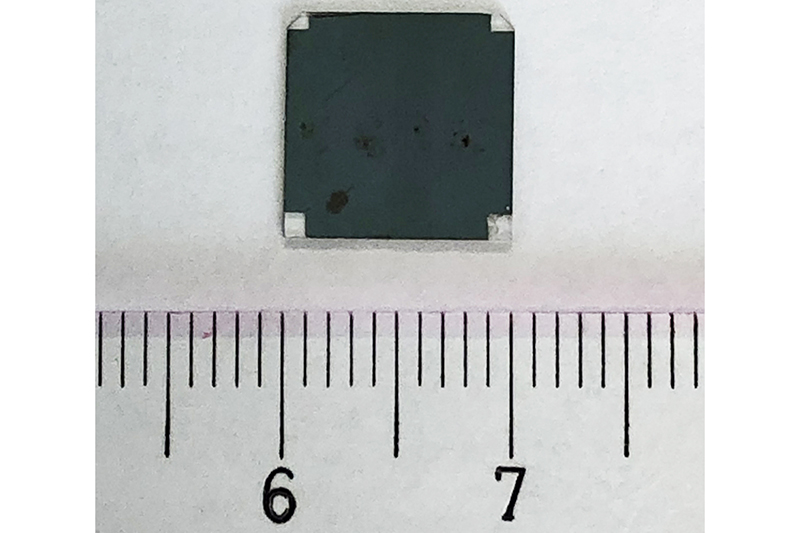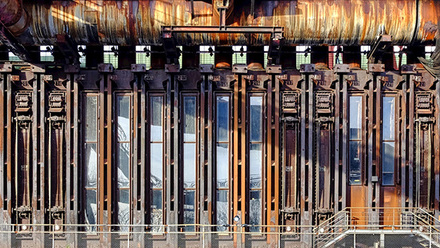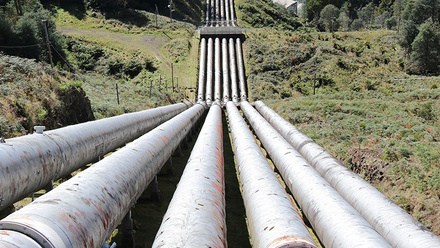Thermoelectric devices without rare earths
Barium cobalt oxide films could potentially be deployed in high-temperature thermoelectric conversion devices in the next five years.
A Japanese study finds the material is both chemically and thermally stable at temperatures as high as 600°C.
The discovery opens the door to a cheaper, more reliable and non-toxic alternative to commercially available devices that are synthesised using rare-earth metals.
The efficiency of converting waste heat into electricity relies on the thermoelectric figure of merit ZT. Historically, oxide-based converters have demonstrated poor thermoelectric performance. Recent research has revealed many candidates that have high ZT, but their stability at high temperatures is not well documented.
'Some people believe that oxides are stable at high temperature in air because oxides have been oxidised already but that is not true,' says Professor Hiromichi Ohta, who leads the team at the Research Institute for Electronic Science at Hokkaido University. 'Some oxides evaporate at high temperature and some oxides lose their electrical conductivity when heated in air.'

Ohta has worked on layered cobalt oxide films for more than 20 years. In this study, the team examines the thermal and chemical stability of these films and measures their ZT values at high temperatures. They have tested cobalt oxide films layered with sodium (Na₃/₄CoO₂), calcium (Ca₁/₃CoO₂), strontium (Sr₁/₃CoO₂) or barium (Ba₁/₃CoO₂) to analyse their structure, resistivity and thermal conductivity.
They find that, of the four variants, the barium cobalt oxide layered film retains its structural integrity and electrical resistivity at temperatures as high as 600°C. In comparison, the sodium and calcium cobalt oxide films are only stable until 350°C, and the strontium cobalt oxide film is stable up to 450°C.
Furthermore, the ZT of the barium cobalt oxide film increases with temperature, reaching ~0.55 at 600°C, comparable to some commercially available thermoelectric converters.
To reach their conclusions, the researchers have fabricated single crystalline films of thermoelectric oxide materials using the solid-phase epitaxy method. The crystalline phase, orientation and the thickness of the films are analysed using X-ray diffraction, according to the research paper published in ACS Applied Materials & Interfaces on Ba₁/₃CoO₂: A Thermoelectric Oxide Showing a Reliable ZT of ~0.55 at 600°C in Air.
The Na₃/₄CoO₂ films are first grown heteroepitaxially on a substrate by applying the reactive solid-phase epitaxy technique. After this, the team undertakes ion exchange treatment before performing thermal annealing of the film at high temperatures and then taking structural and electrical measurements.
'We exchanged the Na ions into Ba ions of the Na₃/₄CoO₂ films and obtained Ba₁/₃CoO₂ film,' explains Ohta.
Thereafter, 'the difficulty is how to measure the thermal conductivity of Ba₁/₃CoO₂ film in the in-plane direction. It was really challenging. We took more than three years to accurately measure the thermal conductivity', says Ohta.
The research paper notes that they recently began to measure the in-plane thermal conductivity (K) of the variant films using the time-domain thermoreflectance (TDTR) method. From this, they hypothesise that 'a layered cobalt oxide composed of heavy ions shows low K as a result of vibrational damping that is caused by the heavy ions'.
Prior to the measurement, a dense platinum film is deposited on the surface of the layered cobalt oxide film and this works as a transducer by applying dc sputtering at room temperature, the paper explains. The team then simulate the TDTR’s signals’ decay curves to work out the thermal conductivity.
The team concludes that the power factor of barium cobalt oxide also gradually increases to ~1.2 mW m−¹ K−² and the thermal conductivity gradually decreases to ~1.9 W m−¹ K−¹ when the temperature increases to 600°C.
Ohta says the next step is to fabricate a large enough amount of the Ba₁/₃CoO₂ material and then look to develop a thermoelectric device, which he estimates may take five years to achieve. 'The most important thing is the fast development of bulk Ba₁/₃CoO₂ material that shows good thermoelectric performance.'







